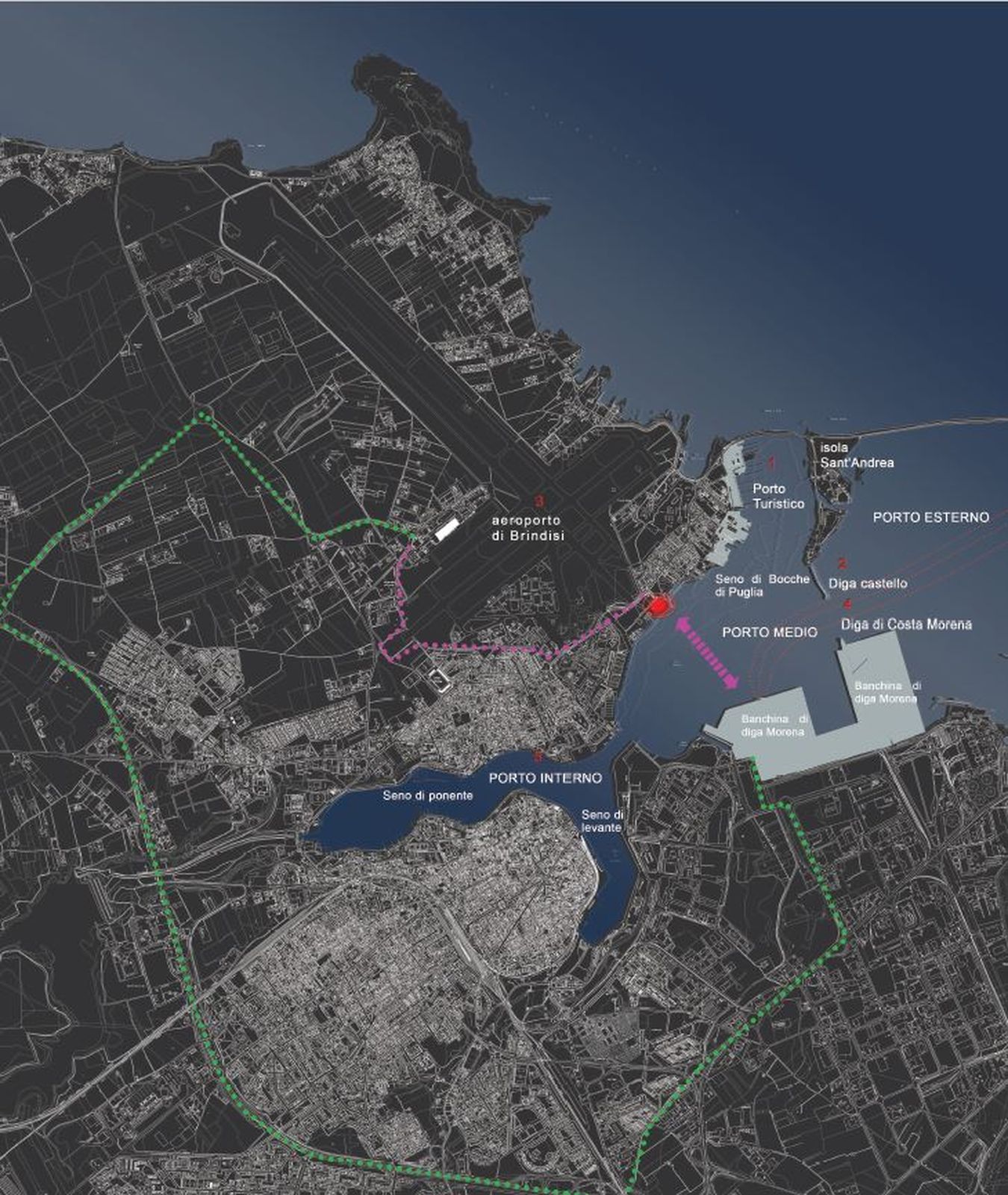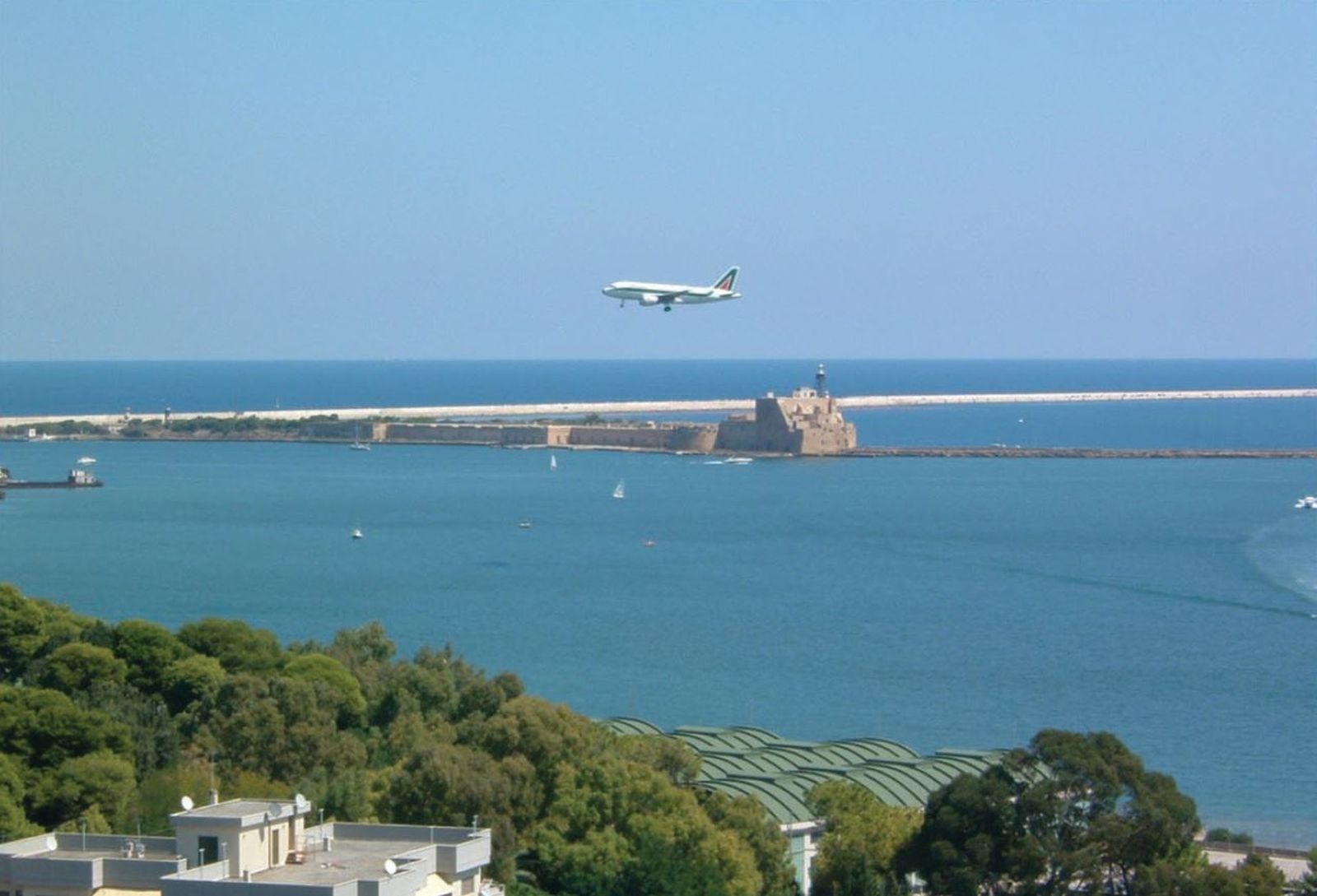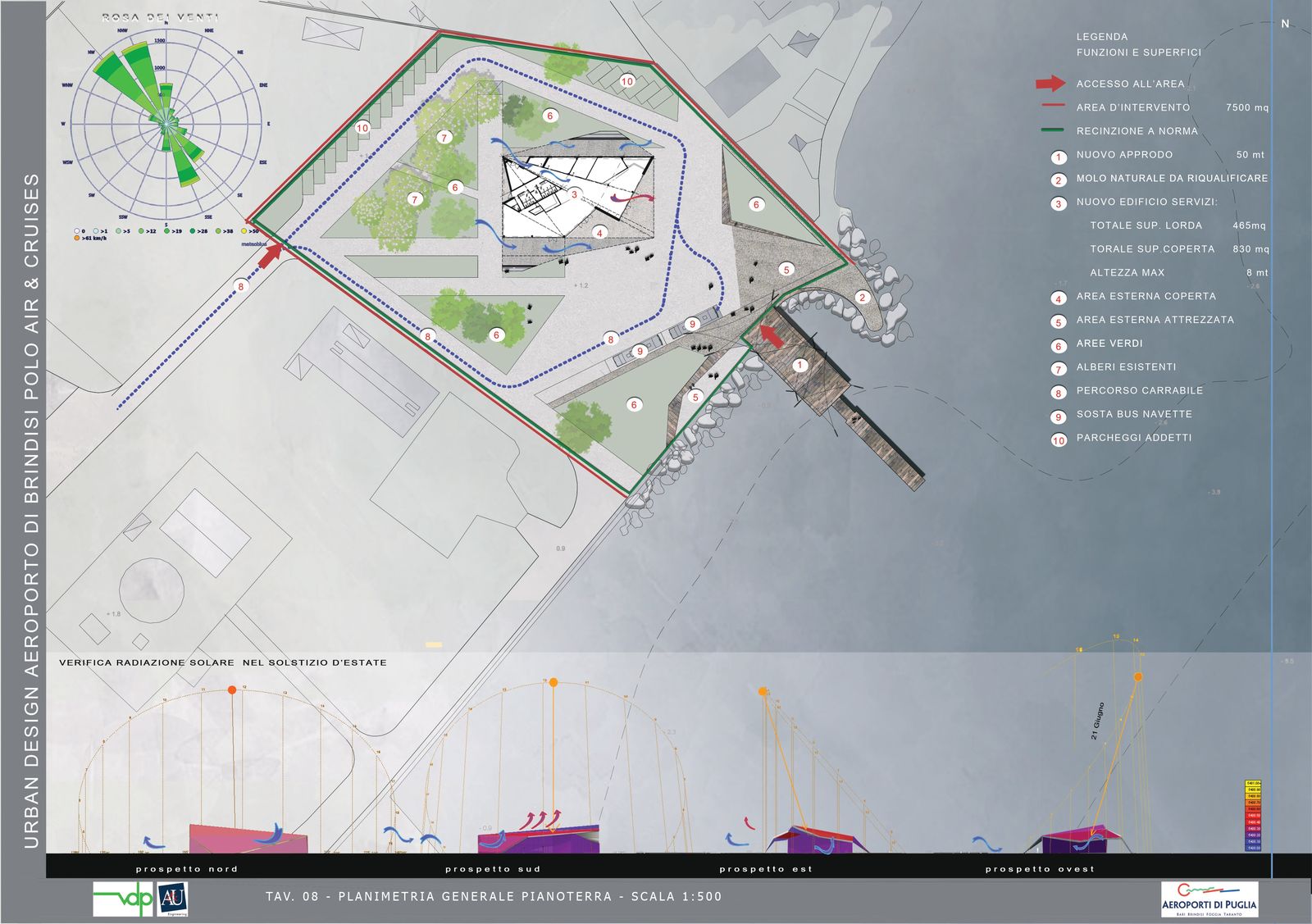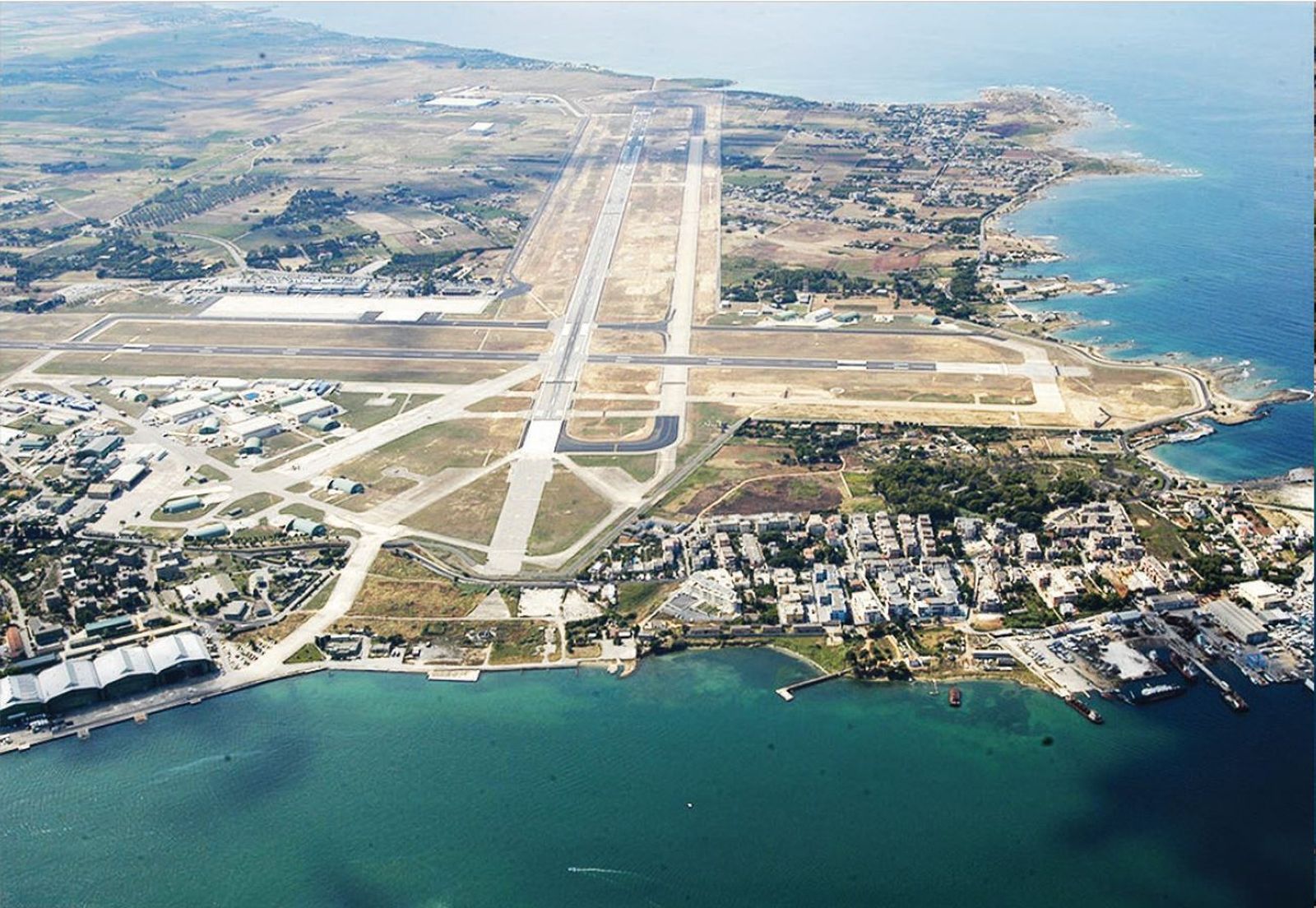Project Details
Feasibility Study for Brindisi Airport, POLO AIR & CRUISERS
PROJECT DESCRIPTION
Airports of Puglia, that it manages the Airport of Brindisi, has expressed the requirement to connect via sea the airport area with that of the marine property of the Port in order to create a direct connection for those passengers who enjoy the naval connections (in particular, cruise passengers) and air connections.
The idea, very simple and very effective, takes advantage from the position in favour of Brindisi Airport that is close to the port basin. The head runway 31 is a few hundred meters from the sea and in that position the airport seat comes to look at the water mirror. This arrangement favours the construction of a work which can become the main element of connection between ship and plane.
VDP in cooperation with the A&U Engineering support, has elaborated a preliminary project “Polo Air&cruisers” that it consists in a building with function of “dedicated terminal” for passengers to/from cruises equipped with a dock for the berthing of the boats that would carry them from/to the ship from/to a small parking area connected to the airport’s internal roads for connections to the airport terminal.
basically, through a “sterile” route the passengers “cruise passengers” reach directly the Polo Air&cruisers with dedicated boats and therefore the area of boarding situated in the Terminal. The route is defined as “sterile” because it does not involve the need for passengers to pass through further checks control.
The building has been designed to be a stopping place in transit times from one way of transport to the other and as such is equipped with services, as well as offices functional to the purposes for which the project is carried out.
The project is accompanied by a study of programmatic, environmental and landscape.
SPECIFTY OF THE STUDIO
The design choice is based on full adherence to criteria of eco-sustainability about indications of Project, from the existing environmental quality and assuming full reversibility of the proposed modification.
The project is designed in an eco-friendly way and complies with Community requirements for the controlled use of primary resources and energy containment.
The adoption of bioclimatic criteria in the project tends to reduce the use of active systems for heating and air conditioning environments because the production of heat or cooling can be ensured through the combination and diffusion of systems passive and/or hybrid, limiting the use of expensive conventional energy sources both for high costs and for the environment (toxic emissions)



